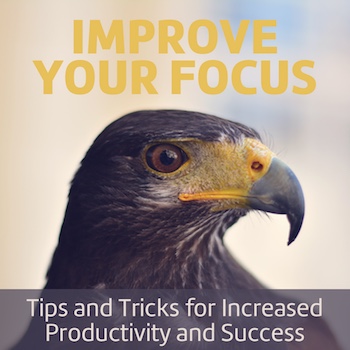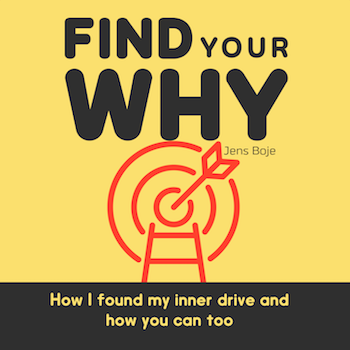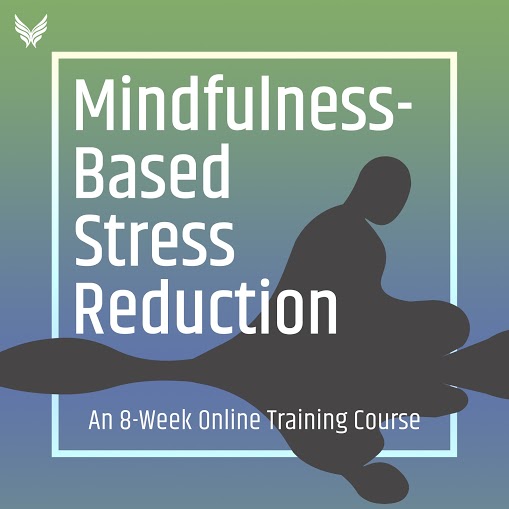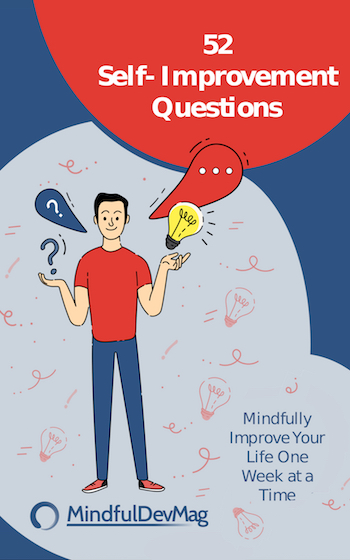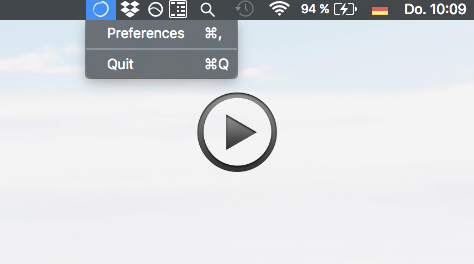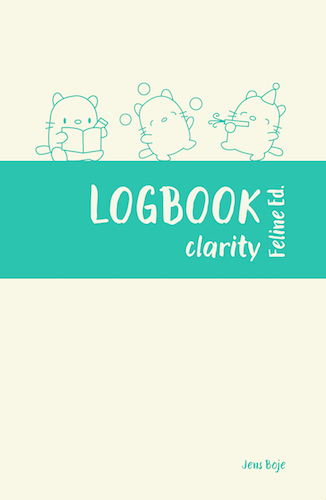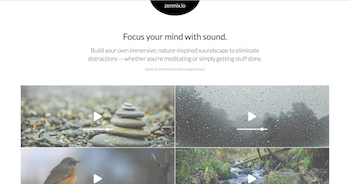Got Too Many Ideas? Read This.
You’ve been gifted with the skill of getting too many ideas?
Congrats.
My sympathy too.
Welcome to the club!
It’s great to have an unlimited supply of ideas, but at the same time, it makes it hard to stick with one. As soon as you start working on one, new ideas pop up and eventually distract you.
At least, if you do not actively train your brain to finish what you are working and pause the distraction for now.
In this article, I’ll cover some strategies you can adopt to deal with the idea overflow and show how other entrepreneurs deal with it.
Having Too Many Ideas is Neither Good Or Bad
Before we dive into the strategies, I want to make one thing clear.
It can be a blessing or a curse to have too many ideas. Sometimes, it feels like both.
Ultimately, it depends on the situation and what you will make out of it. If you don’t actively deal with it, it will turn into a curse.
So for me it’s a really great sign when I start having a flood of ideas again because it means I’ve successfully pulled my head out the consulting game and am getting back into entrepreneur mode.
Colin Bartlett - Founder of StatusGator
1. Write It Down
A standard solution is to write this idea down, so you don’t forget it. Moreover, it left your brain and frees up mental capacity again. Move on to point two– don’t act on it.
It does not matter where you write it down. Use your preferred tools, be it apps, paper notebooks, or the next free white space on any paper as a receipt.
Whenever you get an idea, write it somewhere. Be it notes app, on paper. Write about every single detail which you are “fascinating” about at that moment.
Vaibhav Dwivedi - Founder of Designtack
Some keep growing collections in notebooks, spreadsheets, Trello boards, and others.
I highly recommend writing all your ideas down in a place where you won’t lose them. I have a note on my phone that has all my ideas from the last 6 years. Once in a while I look through them all and decide what makes most sense to work on. I love having a backlog.
Cory Cooper - Founder of Relica
2. Don’t Act Immediatly On It. Put It To The Side.
Now that you have written it down, it is time to ignore the idea for now. The goal is to not act on it immediately.
Right now, the new idea is a distraction. You have better things to do than acting on it now. Train your brain to ignore the new and focus on what you are doing right now.
I write my ideas down in random places like iOS notes. Sometimes I look back at them and wonder WTF I was thinking. But more often than not I just channel my energy back into my SaaS product StatusGator because the sooner that it is paying me, the sooner I can start exploring my other ideas.
Colin Bartlett - Founder of StatusGator
Breathe the Urge To Act Away
Breathing is a powerful tool. It not only keeps us alive. It also has the power to calm us down and remove overwhelm and distractions like your new idea.
Take a few deep breaths, and the urge to act will fade.
I took a few deep breadths and ended up putting it on the todo list for later
Yaro Bagriy - Founder of Newsletter Crew
Wait a Couple Of Days
Another common coping strategy is to wait a few days before you think about this idea again.
Before you jump into working on it, give it at least 2 days. See, if you still want to pursue it or not. It works for me and doing this can save you a lot of time.
Vaibhav Dwivedi - Founder of Designtack
Practice Mindfulness
Mindfulness is the skill of being in the present at the thing you are doing right now. Past, future, worries don’t matter. What matters is that you focus on what you are doing right now, like concentrating on reading this article while not getting distracted by random thoughts.
It’s a great tool, no matter your beliefs or being a fad. Start with the free article about mindfulness and controlling emotions.
3. Finish What You Are Currently Working On
Finishing is more important than starting new things. If you always start new things but never finish the old, you’ll collect a dozen of unfinished stuff.
Inspiration is really only useful to a point and then it sort of becomes counter productive. It gets in the way of what you were already working on. Then you end up with a 100 half started projects and nothing to show for it.
Damien Bell
Tons of unfinished stuff will create regret and doubt. Don’t go that route.
Better learn to finish things– by doing.
Having a Reason Helps
It can be tough to finish something when you don’t have a reason to do it. Find your reason or, better yet, create one before you even start working on the idea.
I find its hard to stay focused on an idea for the long haul, especially during the harder parts of a project. I almost gave up on my (now somewhat successful) web app signature.email a few months ago because it wasn’t going anywhere. But I had a goal to launch it on Product Hunt and so after I finally did that it finally started to gain some traction.
Jesse Sutherland - Founder of signature.email
Pick Small Ideas and Finish a Tiny Version
The best way to train your brain to finish things is by completing things. Now, big ideas don’t work here. But tiny ideas do.
Pick a tiny idea and do the least required amount of work to get a finished project. It’s only finished when you published it somewhere.
Otherwise, procrastination will leap in and stops you from finishing anything. (btw procrastination is just a symptom)
You’ll train your mind to focus on the critical things, the essentials, and finish what you started.
Over time, your projects can become bigger as you train your finishing-muscles.
It’s like doing pushups. In the beginning, you can barely do one, but if you train regularly, your muscles and motoric skills grown, and you can finish 20 in a row.
4. What Ideas You Should Pursue
That is a good questions. The answer is it depends. It depends on your reason.
- Do you want to build it just for fun?
- Wanting to create something for money?
- Driven by your purpose?
Different reasons require different methods.
Choosing By Subconsciousness aka Feelings
The largest part of our minds runs on a subconscious level: habits, routines, automation, emotions, intuition. Everything is subconscious.
The thing is, the subconsciousness does not speak in words or useful sentences but rather with emotions, pictures, short thoughts.
Have you ever felt that your gut was telling you what to do, but your rational thought took the opposite route? And in the end, your guts were right?
That is your subconsciousness at work.
It processes more than we think. Yet, our rational part - the voice in your head - can have a hard time understanding it. It’s a skill you can learn but slightly out of scope for this article (read more in Unlock Your Mind).
Essentially, your subconsciousness made a decision, and you just go with it. Trust it.
Creating Your Own Process
Add structure to your ideas collection and create a process out of it.
Like Tim Pulver did for his side-project ideas. He collects all his ideas in a Notion table and classifies them.
- Rating [1–5]
- Expected Joy [1–5]
- Commercial [yes / no]
- Time to MVP (estimated number of days to have a working prototype)
- Tags [“Machine Learning”, “App”, …]
- and more
I can then set up various filters to find an idea out of my idea box to work on.
Based on time and circumstances, he can now pick on from his list, which fits the current criteria, thus reducing friction and any excuses to procrastinate.
Another example is Utsav Patel of SaaS Enthusiast, who shares his ideas and gauges interest. If people seem interested in the idea, he moves forward by setting up landing pages to validate if people are interested and even buy.
Your process will vary, and that is good. It is your process and should reflect your thinking, not those of others. Start with a short, step-by-step list of what you usually do before you go in on your ideas.
That is your process.
Now you add new steps, test them, and adjust.
Test What Works For You
All tips work, but not every tip works for everyone. We are different, our minds are different, and so are the solutions.
The best thing you can do is test all tips and see what works for you over a longer period. If something works, stick with it. If it doesn’t move on and revise it later.
Times change, as do we.
